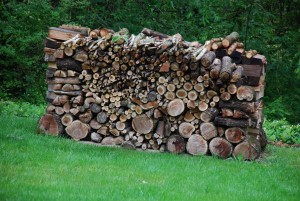Landscaping practices can influence pest populations. Old landscape timbers, particularly those that are partially rotted, may provide food for termites. powder post beetles, and carpenter ants. Numbers of millipedes, earwigs, crickets, sowbugs, and clover mite larvae may be greatly reduced if piled up old branches and boards are properly disposed of.
Mosquito populations rise in wet summer weather when buckets, plugged up eaves, old tires lay around filled with stale rainwater. Mosquitos carry serious health risks such as the West Nile virus and malaria.
Never distribute organic based mulches near house wood siding and low window sills. Watch wood chip mulch and other wood products on or in the soil (lumber scraps, boards, firewood, pallets, etc.) for signs of activity if termites are present in your area. Keep wood-based mulches several inches away from the house foundation. Bark-based mulches are permitted. Never allow soil or mulch to contact wood- made windowsills or house siding. Periodically inspect mulched zones around your home and garage for signs of termite activity.
Remove old fallen branches to discourage rodents and snakes from nesting. Firewood can also harbor large cockroaches, carpenter ants, wood-boring beetles, termites and others. Clean leaves and debris from gutters.
Overgrown weeds and grasses on abandon properties and vacant lots become the major weeds in the entire neighborhood. Noxious weeds gain a foothold in residential areas by one neighbor who does not take ordinary care of his or her property. In a short time invasive plant species such as multiflora roses, ivies (adult forms), honeysuckles, Johnson grass, and thistles cost muncipalities tens of thousands of dollars to eradicate.


 Posted in
Posted in 
